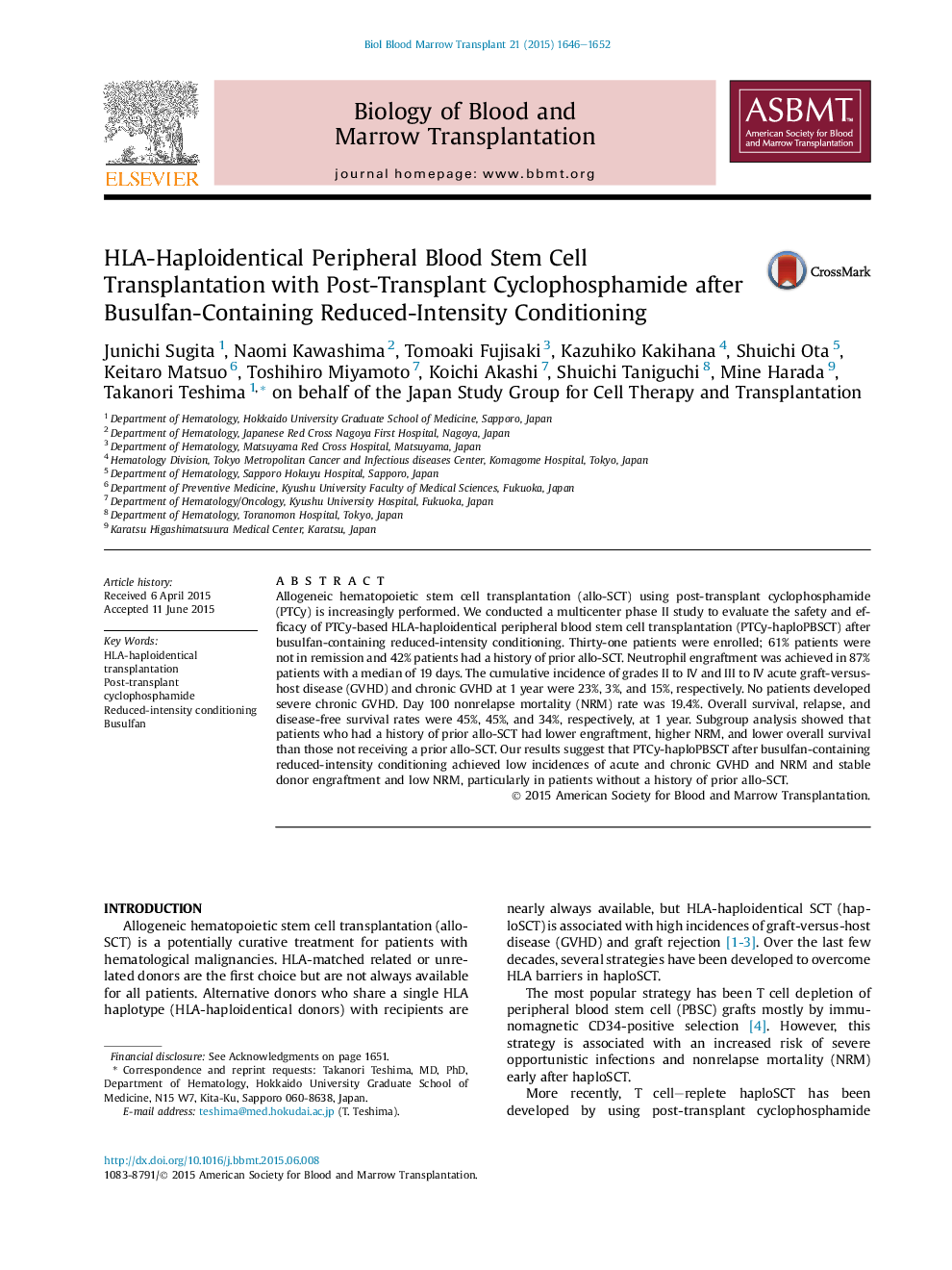| Article ID | Journal | Published Year | Pages | File Type |
|---|---|---|---|---|
| 2101837 | Biology of Blood and Marrow Transplantation | 2015 | 7 Pages |
•We report the outcome of haplotransplant using post-transplant cyclophosphamide.•Busulfan-containing reduced-intensity conditioning and PBSCT were used.•There was low incidence of acute and chronic GVHD and NRM and stable engraftment.
Allogeneic hematopoietic stem cell transplantation (allo-SCT) using post-transplant cyclophosphamide (PTCy) is increasingly performed. We conducted a multicenter phase II study to evaluate the safety and efficacy of PTCy-based HLA-haploidentical peripheral blood stem cell transplantation (PTCy-haploPBSCT) after busulfan-containing reduced-intensity conditioning. Thirty-one patients were enrolled; 61% patients were not in remission and 42% patients had a history of prior allo-SCT. Neutrophil engraftment was achieved in 87% patients with a median of 19 days. The cumulative incidence of grades II to IV and III to IV acute graft-versus-host disease (GVHD) and chronic GVHD at 1 year were 23%, 3%, and 15%, respectively. No patients developed severe chronic GVHD. Day 100 nonrelapse mortality (NRM) rate was 19.4%. Overall survival, relapse, and disease-free survival rates were 45%, 45%, and 34%, respectively, at 1 year. Subgroup analysis showed that patients who had a history of prior allo-SCT had lower engraftment, higher NRM, and lower overall survival than those not receiving a prior allo-SCT. Our results suggest that PTCy-haploPBSCT after busulfan-containing reduced-intensity conditioning achieved low incidences of acute and chronic GVHD and NRM and stable donor engraftment and low NRM, particularly in patients without a history of prior allo-SCT.
